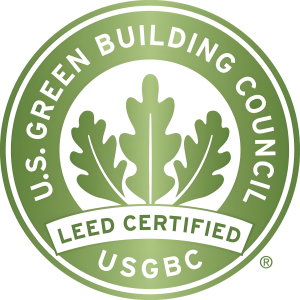Selecting office furniture for LEED v4.1
Every day, people work in and around spaces filled with furniture, but how many of us know how our furniture impacts us or the environment? Furniture products can be made with high-emitting materials that can off-gas chemicals and potentially affect employee productivity; or they could be manufactured with high-embodied carbon materials that contribute to climate change. Choosing sustainable furniture is important for all projects, especially those pursuing LEED, so it is crucial to consider the environmental and human health impacts of the items we select for our spaces.
LEED v4.1 provides excellent guidance for teams looking to specify more sustainable products for their spaces through the following Materials and Resources credits:
How do we identify products to help us achieve our goal of LEED v4.1 certification? See below for some helpful tips. The good news is that there are plenty of products available that can contribute to many or all of these credits.
Environmental Product Declarations, Option 1
Understanding the environmental impacts of the products we specify can help us manage and reduce environmental harm. To meet this credit, specify products where the impacts have been studied and reported through third party–verified, Type III, product-specific Environmental Products Declarations (EPDs).
These EPDs are based on Product Category Rules (PCRs), which are created by industries and set the framework for what is reported in the EPD, along with telling practitioners what to study in the life cycle assessment. These are the highest-value documents available in this category (worth 1.5 products instead of one product).
Many furniture manufacturers can offer EPDs for their products. PCRs have been created for workstations, seating, storage/casegoods, tables and architectural walls products, meaning that third party–verified, Type III product-specific EPDs meeting all LEED criteria are available for these product types.
Where do we find EPDs? Check furniture manufacturers’ websites (typically the sustainability page), EPD program operator sites (like SCS Global Services and UL Environment), and databases from groups like mindful Materials and Sustainable Minds. Project teams should verify that EPDs meet LEED criteria by cross-checking EPD requirements in the LEED rating system guidance.
https://www.usgbc.org/articles/selecting-office-furniture-leed-v41-usgbc-los-angeles



